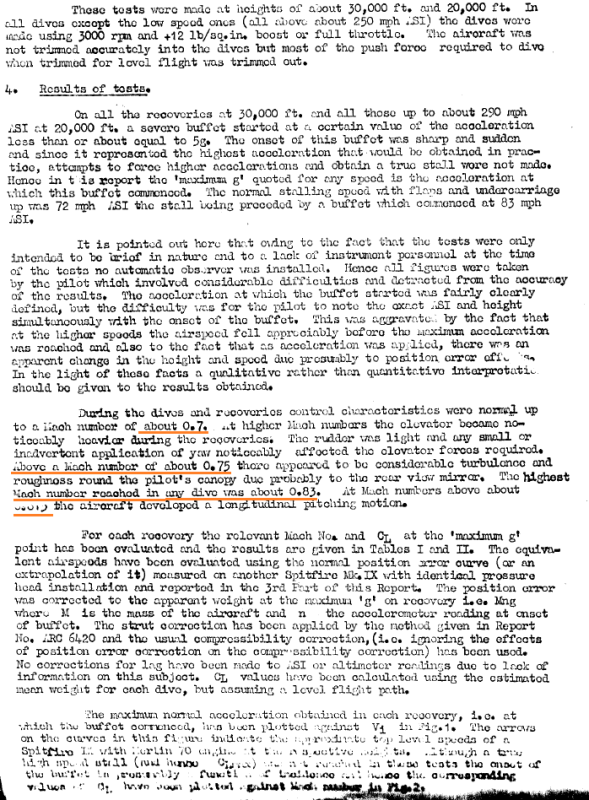Quote:
Originally Posted by Viper2000

I didn't claim that a Spitfire fighter was capable of Mach 0.89 in a controlled dive. You seem to have set the PR.XI Mach number up as a straw-man.
|
No straw man here, the PR.XI
PR Mach number is just happens to be the most commonly referenced.

Quote:
Originally Posted by Viper2000

But I have no reason to believe that it was unsafe to operate the aeroplane within its published envelope (i.e. the lower of 450 mph after position error correction, or Mach 0.85), not least because pilots tend to get quite vocal if aeroplanes scare them within the published envelope, and I also have no reason to disbelieve the tactical Mach numbers quoted by Eric Brown in his various books.
IIRC there may be some dive test data from a Spitfire IX showing a tactical limit of about Mach 0.83 out there somewhere. This would be fairly reasonable.
AFAIK the tactical limit for the Mustang is about 0.80, Thunderbolt about 0.72, Bf-109 and Fw-190A 0.75, whilst the P-38 was only ok to about 0.68. However, my books are at home; the numbers can be cross-checked in Wings on my Sleeve, Wings of the Luftwaffe, and Wings of the Weird & Wonderful.
|
What is a 'tactical limit'?

Basically I think the Mach 0.85 dive limit is arbitrary, ad hoc, ex stomach etc. - a bold guesswork that was set well before they would test the actual capability, just like many of the era's limits, though a bit bolder..
But, personally I believe the behaviour shown by
fighter Mark IX BS 310 was certainly no greatly different - better or worse - than just about any WW2 fighter: controls functioned normally up to about .70 Mach, then all sorts of anomalies began to appear.. and at 0.815, there's already a longitudal pitching motion - and 0.85 is still rather far away..
